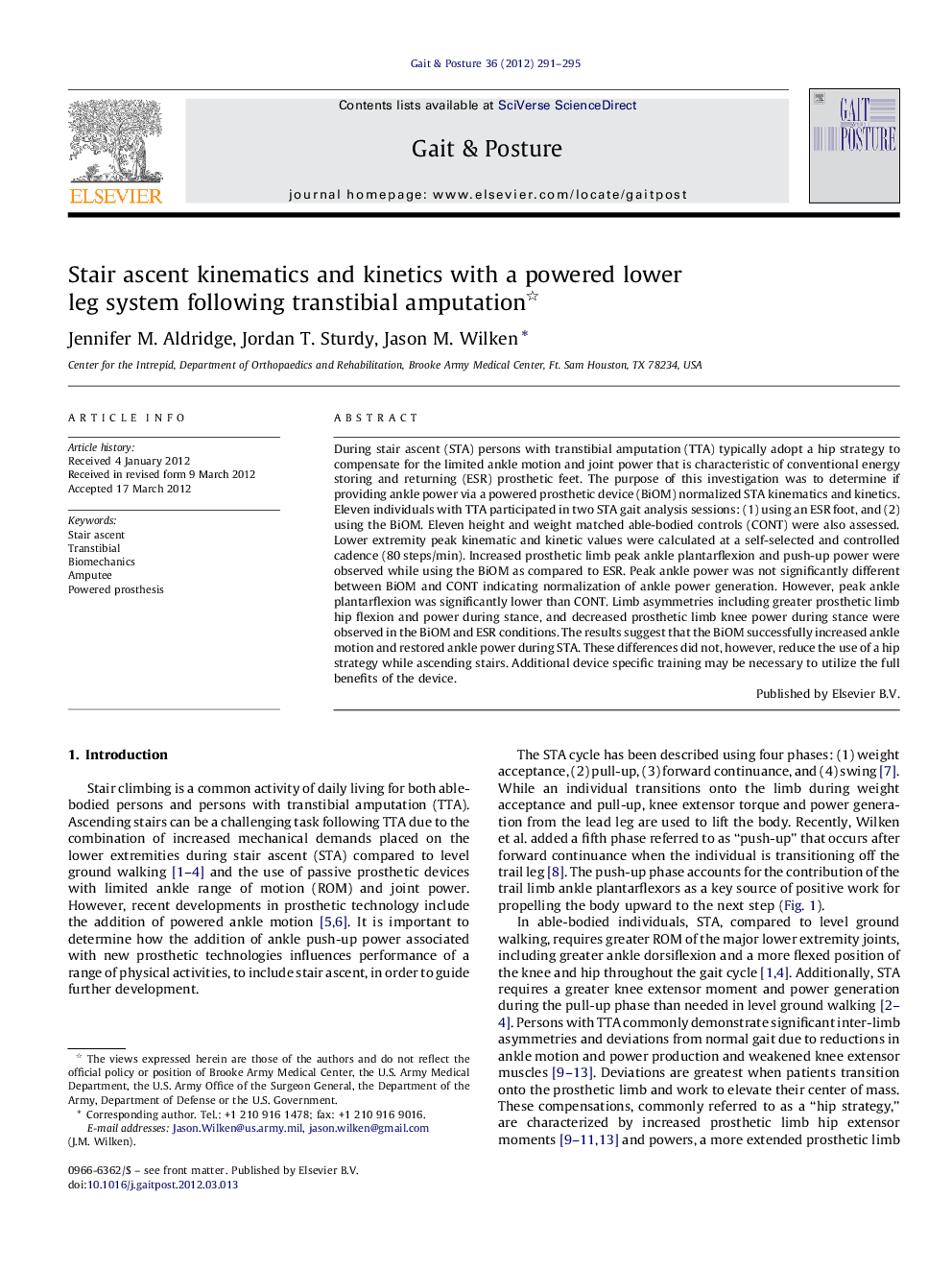| Article ID | Journal | Published Year | Pages | File Type |
|---|---|---|---|---|
| 6208076 | Gait & Posture | 2012 | 5 Pages |
During stair ascent (STA) persons with transtibial amputation (TTA) typically adopt a hip strategy to compensate for the limited ankle motion and joint power that is characteristic of conventional energy storing and returning (ESR) prosthetic feet. The purpose of this investigation was to determine if providing ankle power via a powered prosthetic device (BiOM) normalized STA kinematics and kinetics. Eleven individuals with TTA participated in two STA gait analysis sessions: (1) using an ESR foot, and (2) using the BiOM. Eleven height and weight matched able-bodied controls (CONT) were also assessed. Lower extremity peak kinematic and kinetic values were calculated at a self-selected and controlled cadence (80Â steps/min). Increased prosthetic limb peak ankle plantarflexion and push-up power were observed while using the BiOM as compared to ESR. Peak ankle power was not significantly different between BiOM and CONT indicating normalization of ankle power generation. However, peak ankle plantarflexion was significantly lower than CONT. Limb asymmetries including greater prosthetic limb hip flexion and power during stance, and decreased prosthetic limb knee power during stance were observed in the BiOM and ESR conditions. The results suggest that the BiOM successfully increased ankle motion and restored ankle power during STA. These differences did not, however, reduce the use of a hip strategy while ascending stairs. Additional device specific training may be necessary to utilize the full benefits of the device.
⺠Eleven individuals with unilateral transtibial amputation were assessed using conventional and powered prostheses. ⺠We determined if increasing ankle power normalized lower limb kinematics and kinetics during stair ascent. ⺠The powered device demonstrated greater ankle power generation and plantarflexion during stair ascent. ⺠Deviations from normal stair ascent gait persisted at the hip and knee despite changes in ankle kinematics and kinetics. ⺠Additional device specific training may be necessary to utilize the full benefits of a powered device.
